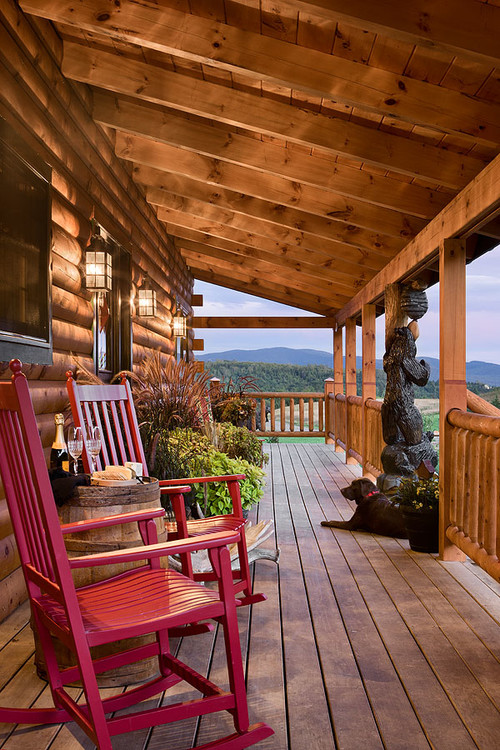Sunday, May 31, 2020
Saturday, May 30, 2020
Friday, May 29, 2020
Can Your Pool Kill the Coronavirus? And Everything Else You Should Know About Swimming During a Pandemic

By now, you may have heard that the novel coronavirus can live up to three days on some surfaces. But what about in your swimming pool? Is there any way you could get the virus from your afternoon dip?
The short answer: You probably won’t get the virus from pool water. But a pool is still a risky environment as far as social distancing and person-to-person transmission are concerned.
So before you head for a swim in your backyard or community pool, read on for expert advice on how to keep yourself and other swimmers safe.
Pool water doesn’t spread the virus, but people do
“If you look at what the CDC has to say, there’s no evidence that [the coronavirus] spreads in water,” says Bill Carroll, an adjunct professor of chemistry at Indiana University. “It can’t reproduce in water. This is not like a food-borne virus that you can eat, and it’s not a water-borne virus. This is an inhaled virus, and in order to be infected, you have to be inhaling it.”
Plus, the chemicals in your pool or hot tub can help kill the virus.
“Chlorine in pool water inactivates the virus so it is no longer infectious,” says Dr. Chris J. Wiant, chair of the Water Quality & Health Council. “A properly maintained pool protects swimmers from the virus in pool water.”
But outside of the water, the virus can spread among people—and the risk is especially high at a community aquatic center or an apartment building pool where lots of swimmers come and go.
“If you’re going to be exposed to the coronavirus, it’s because you’re going to the pool and there’s other people there and you’re not social distancing,” Carroll says.
Be smart about social distancing at the pool
If you go to a community or friend’s pool, remember to practice social distancing and avoid coming within 6 feet of anyone you don’t live with.
“If possible, sanitize chairs before sitting down,” Wiant says. “Minimize time in the locker room by coming dressed to swim, and shower at home both before and after swimming.”
When it comes to your face mask, you should never wear a cloth mask when you’re underwater.
“If your head is going to be underwater, a mask isn’t going to do a damn thing for anybody,” Carroll says. But if you’re standing in the shallow end or lounging poolside, be sure to wear your mask to protect other people.
You can also call the pool ahead of time to ask what precautions are being taken to keep people safe, like limiting the number of swimmers and spacing lounge chairs at least 6 feet apart. And remember: If you’re feeling sick or experiencing any COVID-19 symptoms, stay home.
Normal pool maintenance should be enough to inactivate the virus
Pool water maintenance guidelines haven’t changed in the wake of COVID-19, Wiant says. If you’re responsible for maintaining a public pool, follow the CDC guidelines and check the pH and chlorine levels twice a day, or more if you have a lot of swimmers in the water.
For a residential pool, “there’s nothing special you need to do” beyond your normal weekly maintenance, Carroll says. Stick to your usual pool cleaning routine: Test your pH at least once a week and make sure you have plenty of chlorine available. It’s also a good idea to hyperchlorinate once a week to ward off cryptosporidium, a microscopic parasite that can make swimmers severely ill.
Pool vs. beach: Which option is better?
If you’re worried about coming into contact with other people at the pool and you live near a natural body of water, you may be considering heading to the beach instead.
Properly maintained pools offer an advantage with its chlorine and chemicals that inactivate the virus, but “beaches have large volumes of moving water that dilute virus particles efficiently and reduce risk of exposure to the virus,” Wiant says. Ultimately, “the safest place to swim is wherever there are the fewest people.”
Before you head to the beach, check with your local health department to make sure the water has been tested recently and is safe for swimming.
Please, please, please: Don’t pee in the pool
We hope it goes without saying, but you really need to adhere to proper hygiene while in the pool.
“Shower before swimming, and never pee in the pool,” Wiant says. “The contaminants people bring into the water use up the chlorine, making less available to disinfect against viruses, like the coronavirus, and bacteria.”
The post Can Your Pool Kill the Coronavirus? And Everything Else You Should Know About Swimming During a Pandemic appeared first on Real Estate News & Insights | realtor.com®.
How to Host a Virtual Garage Sale During a Pandemic
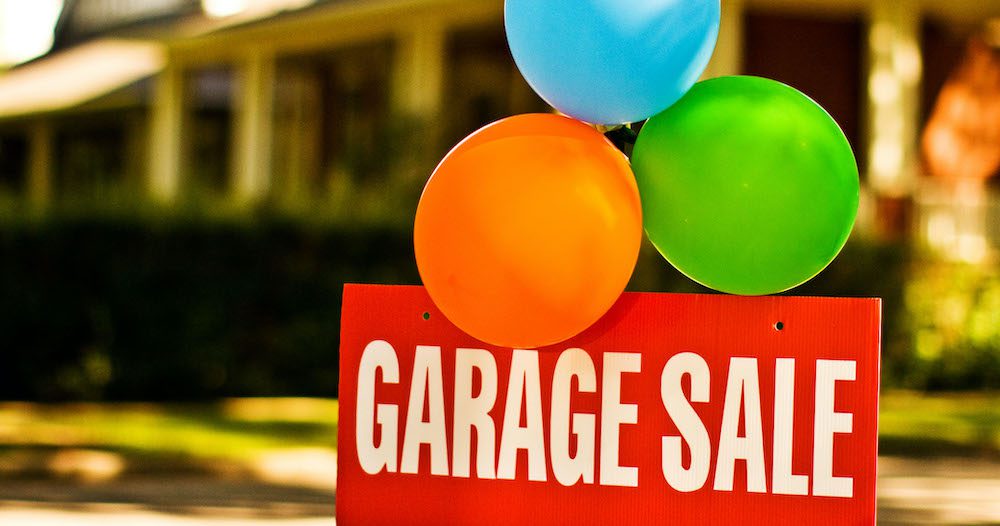
www.reinhartstudios.com / Getty Images
Summer is usually garage sale season, but the coronavirus may have you thinking twice. Even if communities start opening up, many people won’t feel safe visiting your yard or garage to check out your wares.
But that doesn’t mean the idea of a garage sale can’t happen at all. It may just mean that it’s time to host a virtual garage sale instead!
“For most families, quarantine presents the perfect opportunity to double down on efforts to declutter, with an online yard or garage sale,” says Deb Colameta.
As author of the bestselling guide “Best Offer, Best Life!” Colameta has made thousands of dollars reselling hundreds of household items.
You may be pleasantly surprised how profitable such ventures can be, since online sales have a few advantages over real-life ones.
For one thing, you can attract a much broader pool of potential customers online. Since most sales sites come with a search option, you can attract educated and eager buyers who are looking for the particular items you have for sale.
“A person who needs seating can search for ‘Chairs’ and find your product,” says Colameta.
Online sales also have competition going for them.
“During in-person yard sales, you’re dependent on impulse purchases by strangers to make money, and the buyer sees the other competition, if any,” says Colameta.
“So the buyer has a huge negotiation advantage with price. With online yard sales, the buyer is potentially competing with thousands of other members for the same item, so it’s a mystery and a motivator!”
Ready to declutter and make some money from the safety of your own home? This step-by-step virtual garage sale guide will have you purging fast, no garage required.
Identify what you have to sell
Think you don’t have anything worth selling? Think again! A quick tour of your garage, basement, or closets will probably have you stumbling across items that you’ve forgotten you even owned.
“My advice to sellers is to aim for the low-hanging fruit: Choose a few items in great condition that will have wide appeal and a resale price that’s worth your time,” says Colameta.
For instance, that Nintendo Switch console your kids never use that’s in perfect condition could sell for hundreds of dollars. You can also bundle items that fall into one category and sell those together.
“I’ve had much success selling a group of kitchen items, for example, to a recent graduate outfitting her first apartment, and I’ve sold bundles of 10 to 12 baby toys for $40,” says Colameta.
“It works for both sides, as it’s a convenient way to disperse multiple items that are generally lower in value.”
Take pictures of your products
This is a step that you wouldn’t usually have to take with a real-time garage sale, but when moving sales to a virtual platform, visuals matter.
“Use your smartphone, to make the process of uploading as easy as possible,” says Colameta.
“Take lots of well-lit pictures. In most local selling platforms, you are allowed to post several pictures from different angles. You might also include a ruler to indicate size.”
You want to post enticing photos, but make sure to provide closeups of any flaws, like scratches on wood furniture. You want the photos to be representative of the item, so that people feel you’re being transparent and informing them exactly what they’re purchasing.
Sellers will also pay close attention to the background in your images. Colameta says buyers generally like to purchase items from a clean home, so kick any laundry out of view, and crop unsightly items from the final picture.
Include your COVID-19 precautions and requirements
In a post-coronavirus world, you need to assure buyers in your product description that the item will be disinfected and also handled in a way that will minimize their risk of exposure to infection.
You should clean and disinfect all the items you’re selling, wearing fresh gloves and a mask. Of course, this is largely predicated on what the item is. Obviously, you don’t want to ruin couch cushions by cleaning them with bleach, for example, but you get the idea.
The CDC website has further guidelines for cleaning household items. Taking these steps will increase the salability of your items and help keep you and your purchasers safe.
Decide where you’re going to list your items
There are many free websites for selling items, including not only Craig’s List, but letgo and OfferUp. The main question to ask: Do you want to stay local, or expand your pool of buyers?
“If you have a more valuable specialty item that has a niche audience—and you’re willing to make a trip to the post office—you might consider eBay and Amazon Marketplace,” says Colameta.
“Those sites typically have safeguards in place to protect both parties in a sale. For example, when I sold a special pan, Amazon collected payment from the buyer on my behalf and released the funds to me when the buyer took receipt of the item.”
Another great resource is social media, especially Facebook. If you have a neighborhood or meet-up group that you interact with on this social media platform, it’s a great place to post.
This way, you may know the interested buyers, which could be a bonus for safety. For a broader reach, you could also try Facebook Marketplace.
However, keep in mind that “shipping items complicates a sale, and generally involves a hassle when selling a pile of things,” says Colameta.
“I have only mailed one or two items in my online yard sale selling journey,” she notes, “and the shipping costs almost entirely erased my earnings.”
Figure out fair pricing
With a classic garage sale, you’d probably be walking around with stickers and a pen slapping random prices on things. But with an online garage sale, it pays to do a little research.
“Search online selling platforms for similar items and check out the competition,” says Colameta. “You might be surprised to find that the average asking price may be higher than you thought.”
This is especially true right now, when some items can be hard to find during lockdown.
“You can inspire buyers to act fast with a ‘Bargain Price’ if you want to ensure the sale,” she says.
Pinpoint your preferred cash alternative
In our current world, with concerns about the pandemic, cash is losing its allure (because passing money can be a source of germs).
Your best bet—even if you’re selling an item that someone comes to retrieve in person—is to practice safe transactions using such apps or websites as Venmo or PayPal.
Says Colameta, “It’s convenient, it allows you to avoid direct contact with cash and the buyer.”
Another perk is that some online payment sites, like PayPal, can put money “on hold.”
This allows a buyer to input the transaction and wait until they have received the item before the funds are released. Buyers can then move forward with the transaction confident that they won’t get swindled.
Set a time frame
While a classic garage sale would have you sitting outside with a bunch of items spread around for a whole day or weekend, the luxury of an online garage sale is that you can post your items all at once or sell a few items every week all summer.
“In-person yard sales are tough to schedule ahead, due to unpredictable weather,” says Colameta. “Online yard sales can be done in any season and do not depend on good weather conditions.”
Some people may feel more comfortable giving themselves a deadline, deciding on a date when their items will go on sale virtually. The flexibility of online selling, though, allows you to post items as you move through the purging process, which can be helpful.
“Purging your whole house is a challenging enough task in itself,” says Colameta.
Selling one item at a time, by contrast, can feel manageable.
As for when to post your items, “Midweek is often a good time,” says Colameta. “Over the weekend, your post might get lost among all the others.”
Respond to questions
Once your listings are live, check in to see how your items are doing or if any inquiries have come in.
“Be a responsive seller,” says Colameta. “If someone shows interest in any of your items, answer their questions promptly.”
You will also want to make sure that potential buyers have a way to contact you easily (either through an app or online messenger).
One thing not to post, however, is personal info. The safer route? If you must post your address for pickup, send it to buyers individually rather than blasting it on a site for all to see.
“Some police stations offer labeled parking spots specifically for online sales,” says Colameta. “Always put your safety first.”
Transfer your garage sale items safely
If you’ve sold an item that requires that you mail it, this is the time to see whether your USPS carrier will do pickups at your home. If not, you may have to carefully package the disinfected item, using gloves, and then take it to the post office yourself to mail.
For something that requires an in-person exchange, don’t release the item until you have confirmation of a payment.
Consider setting it up like the transfer of a hostage—you put the item down between you two at a safe social distance, the buyers Venmo you the money, and then, once it’s received, you can move away from the item and they can come to retrieve it. It sounds a bit dramatic, but it works.
The post How to Host a Virtual Garage Sale During a Pandemic appeared first on Real Estate News & Insights | realtor.com®.
The Fun Way Parents (and Kids) Can Find More Privacy at Home
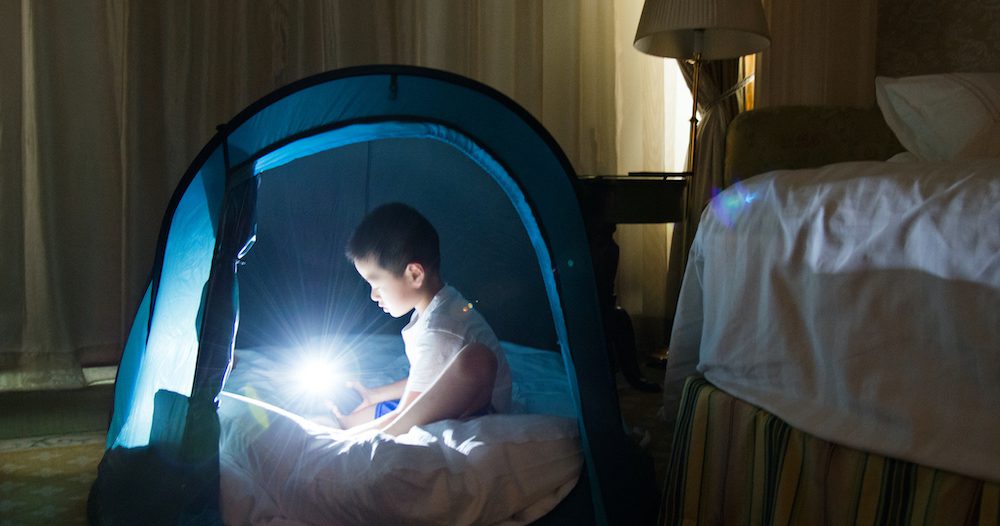
baona / Getty Images
With the novel coronavirus forcing families to remain cooped up—often in too-small spaces—parents are pining for more privacy. Well, guess what? Your kids may be dying to get away from you, too.
“Since adults and older kids have taken over home offices, kitchen tables, and living rooms, younger children often feel like they don’t have a space to call their own,” says Julie Muniz, a curator who specializes in 20th- and 21st-century art and design.
One solution that’s catching on? Forts, tents, teepees, and other cute shelters that can double as mini man caves for the grade school set. Not only can kids find some peace and privacy in such spots, but having their own space offers more subtle benefits, too.
“A special spot for kids to hide in can foster creativity, allow them to become independent thinkers, and enjoy a sense of ownership in their personal space,” says Kami Kincaid, an architect at Perkins & Will and herself the mom of two.
In fact, the architects at Kincaid’s firm came up with a design for a collapse-proof DIY blanket fort to help family members tune one another out during the COVID-19 crisis. And even Ikea has embraced fort building: The Swedish home furnishings giant recently released sketches and instructions for six adorable DIY forts you can try at home.
And if you’re up for buying rather than building a fort, plenty of options abound. Here are some cool options to consider, as well as more detailed DIY fort-building instructions you can try right now.
Teepee fort
Wayfair
This cotton teepee can be set up in the playroom or the backyard, and comes with four poles for a sturdy structure. Plus there’s a window and a roll-down shade to peek out at the grown-ups ($52, Wayfair).
Canvas cabin
Crate & Barrel
This square cotton tent comes with adorable cactus detailing and its own mailbox—perfect for secret notes to be passed back and forth from the outside world ($170, Crate & Barrel).
Circular tent
Macy's
This cute tent takes less than five minutes to build, and it collapses just as quickly so you can stow it away in a snap. Made from spot-clean polyester with a sweet ruffle along the top, this circus-style fort is a sweet spot for silent reading, drawing, and endless daydreaming ($49, Macy’s).
Play tunnel
Amazon
Wee ones will thrill to a brightly colored tent-and-tunnel combo, especially this choice with separate ends so each tot has her own play area. Kids can traverse the tunnel from the teepee to the square and then back again in this smart pick made from BPA- and phthalate-free material ($45, Amazon).
Fire engine fort
Wayfair
Fire truck toys and EMT costumes are a big part of childhood, so make your kid’s dream come true with his own red vehicle. This option features windows and a door, plus pictures of all the gear you’d expect on a real rescue truck, including an ax, shovel, ladders, and hose reels. And you’ll feel good about this purchase since the pigments and dyes are water-based and nontoxic ($107, Wayfair).
Paper spaceship
Amazon
Hours of fun can be had with a blank canvas like this one. Astronauts-to-be can climb aboard, decorate their paper vessel, and then blast off into outer space, returning just in time for dinner ($36, Amazon).
Camo tent
Target
Army battles can be waged safely from this lightweight igloo-style tent that comes in its own travel bag for easy transport. A mesh window allows air to flow, and the fact that it’s no-assembly means kids can pop it open themselves ($55, Target).
DIY fort from bedsheets
Want to save some bucks and use what you already have for a kids’ hideout? Turn to your linen closet.
“Take a rope and secure so it spans one side of the room to the other, and then place a sheet over it for an instant fort,” says Kincaid. You can widen this fort by securing chairs to the outstretched middle section of the sheet.
Or erect the same type of hideaway in the yard with a rope tied between two trees that’s draped with blankets, says Karen Gray-Plaisted of Design Solutions KGP. And when kids get older, they can move to real camping tents in the backyard, she adds.
DIY cardboard fort
Remember the forts we used to build out of huge cardboard delivery boxes? Check your recycle bin for any sizable containers.
“Cardboard is always an easy option, because with some packing tape, markers, and imagination, you can create a castle or a boat or anything else your kids like,” says Kincaid.
The post The Fun Way Parents (and Kids) Can Find More Privacy at Home appeared first on Real Estate News & Insights | realtor.com®.
6 Father’s Day Gifts Based on His Favorite Style of House

zstockphotos/Jupiterimages/arturbo/ JohnArcher/Solidago/Eder Maioli/Getty Images
A tie? New slippers? Puh-lease. It’s been a rough few months. We can do better on Father’s Day this year!
It’s not that these typical gifts would go unappreciated; sometimes even a classic handwritten card is the best present dear old Dad could ever receive. But, this year, why not upgrade your gift idea by pinning it to his favorite architectural style?
From Victorian to Craftsman to midcentury modern, each type of house has its own unique characteristics and design aesthetics. Some have clean lines, some are more decorative, and some are known for being built tough. Whichever style your pop favors can say a lot about his personality—and the type of gift he’d be thrilled to receive.
To help you find a gift that dovetails perfectly with the home design he admires, here are six popular architectural styles with matching Father’s Day presents for each.
1. If he loves midcentury modern…
… try a bar cart
Crate & Barrel
Dads who binged on “Mad Men” and own coffee table books displaying the greatest works of Joseph Eichler and Richard Neutra will love wheeling their own cocktail cart into the living room at 5 p.m. on the dot. Gold accents, handles wrapped in leather, and acacia wood shelves also make this mobile bar ($599, Crate & Barrel) a stylish addition to a home office or man cave. We also love this more budget-friendly option ($189.99, Wayfair).
2. If he digs the humble ranch home…
… pick up new barbecue tools
Williams Sonoma
Ranch homes are typically simple in design, with a single story, moderately sized eave, and a long footprint.
“A ranch house is a classic style for a classic guy, so consider a present for his backyard like new barbecue accessories,” says Drew Henry of Design Dudes.
Seek out a quality set, like this trio made from stainless steel and walnut ($50, Williams Sonoma). There are also rings on each end for easy hanging on the grill’s handle or in the garage when they’re not in use.
3. If he admires Victorian homes…
Photo by J.P. Hoffman Design Build
… consider a projector
Amazon
Victorian-home owners are often old-school romantics, says Henry. And what’s more romantic than watching a classic movie? A projector ($408, Amazon) will take your weekend screenings of the Criterion Collection to new heights with crystal-clear picture quality. Plus, you might feel like you’re in a movie theater. You remember those, right?
4. If your dad favors Craftsman style…
… go for a table saw
The Home Depot
Craftsman homes sport heavy tapered columns and a wide, covered front porch—and they appeal to someone who values the labor of solid construction.
“This home is for someone who appreciates details and workmanship, so a new tool belt or woodworking saw makes sense here,” says Henry.
This 15-amp power saw with a 10-inch blade stores neatly away in its own folding table stand and comes with a three-year warranty ($189, Home Depot).
5. If he’s a log cabin guy…
… get him a temperature-controlled smart mug
Amazon
Log cabin Dad is rugged but also appreciates the simple things in life, like a good cup of coffee in the morning. Give him the gift of being able to enjoy his cup of joe at a perfect 135 degrees with this smart coffee mug. It keeps your drink hot for 1.5 hours on a single charge, so that should be plenty of time for him to read the newspaper on the porch before starting the day.
6. If he owns (or dreams of owning) a beach house…
… treat him to the ultimate cooler
Amazon
This kind of guy is probably a laid-back dude who loves to fish and hits the surf as often as he can. A quality cooler he can bring to the beach will definitely make him smile this Father’s Day.
We love a good Coleman cooler, but this year he deserves the next level in beer and brat chilling. Enter the Yeti, a coveted brand that’s known for its toughness and insulating power. This option ($400, Amazon) promises wheels that’ll never go flat and comes in several shades, including coral, sea foam, navy, white, and tan.
The post 6 Father’s Day Gifts Based on His Favorite Style of House appeared first on Real Estate News & Insights | realtor.com®.
Thursday, May 28, 2020
The Property Brothers’ Best Secrets to Liven Up Decor for Less Money
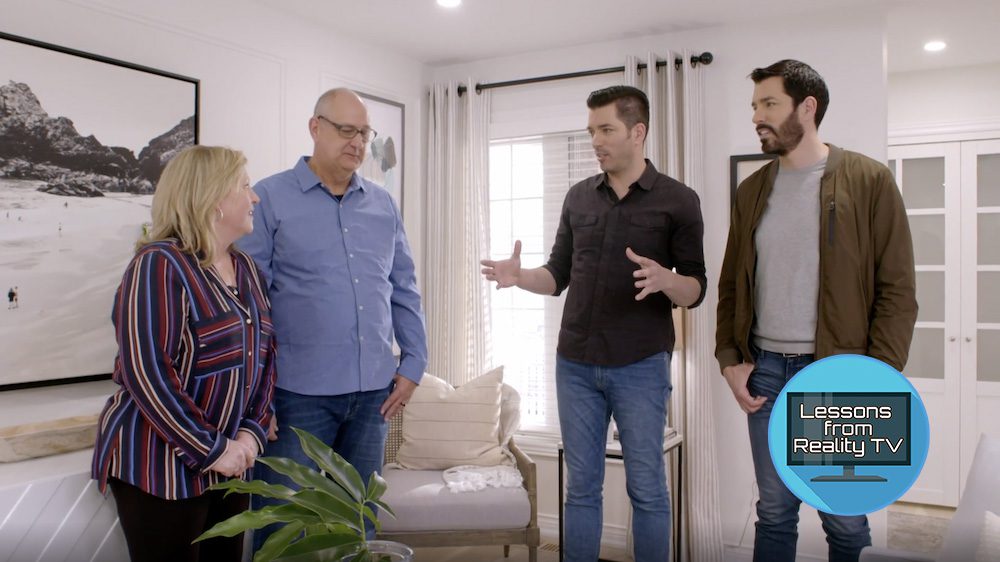
HGTV
Drew and Jonathan Scott are experts when it comes to updating houses for families, and on their latest episode of “Property Brothers: Forever Home,” they help a family that really deserves a fresh start.
On the “Healthy Ever After” episode, Jonathan and Drew meet Allison and Greg, who have been through some hard times. Allison was diagnosed with breast cancer, and after a long struggle, finally beat the cancer with her family by her side. Now, after all that Allison and Greg have been though, they know they deserve to finally treat themselves to the home updates they’ve been dreaming of.
Read on to find out how Drew and Jonathan liven up this traditional family home, and learn some tips that you could use for your own home, too.
Light floors give a home a modern look
HGTV
Allison and Greg are looking to start a new chapter, and what’s a new chapter without some fresh, new floors?
Drew and Jonathan know that the home’s dark and narrow hardwood planks are too old-fashioned for this family, so they decide to replace them with something brighter.
With new wide-plank, light hardwood, the ground floor of this home brightens up, giving the living space a larger and more welcoming feel. Of course, Allison and Greg love it.
“The floors are gorgeous and homey,” Greg says.
Livening up home decor doesn’t need to cost a lot
HGTV
With a wood-tone table, a matching hutch for glassware, and an outdated chandelier, the dining room feels bland and stale. So it’s no surprise when Allison and Greg tell the Scott brothers to give their dining room a modern makeover.
The brothers know that this space doesn’t need a big renovation; it needs only a few fresh and budget-friendly touches.
HGTV
Drew and Jonathan liven up the space by bringing in a new white dining table and dressing up the space with some color. The mix-and-match blue chairs give the space a fun, casual vibe, and the area rug brings some classic charm to this dining space.
But the best part of this budget-friendly makeover is the new chandelier. This fixture is modern with fun, geometric shapes, and the gold accents give the space some extra pizzazz.
A country kitchen can still feel contemporary
HGTV
Allison and Greg want their home to have a modern look mixed with a classic, country aesthetic. Of course, Drew and Jonathan know they can give this couple the “country-contemporary” look of their dreams, and they make sure to bring this theme into the kitchen.
With country-chic wood stools at the island and modern black pendant lights overhead, this kitchen perfectly blends new styles with a classic charm.
“It’s not old-fashioned. It’s a modern, comfortable look,” Greg says.
The backsplash should match the kitchen style
HGTV
To finish this kitchen, the brothers need to decide on a backsplash that will fit with the rest of the kitchen design.
They end up choosing a tile that’s equal parts country and contemporary. The tile has a geometric pattern that looks clean and modern, but it also has a soft color that gives it a country-fresh look.
Porcelain tile is a budget-friendly alternative
After Allison and Greg ask for some extra renovations to the second living room, Jonathan knows he’s on a tight budget. To save some money, he decides to switch out the marble he was going to put in the master bathroom with less expensive porcelain. He explains that it’s a smart switch because the porcelain still looks beautiful, while coming with a much smaller price tag.
Choose a big tub for tall family members
HGTV
Greg and Allison already have a tub in the bathroom, but the brothers note that it’s small and shallow.
Since Greg is tall, the brothers know that he probably couldn’t enjoy a soak in the old tub, so they decide to replace this tub with something a little more functional—and a lot more stylish.
They choose a deep, free-standing tub that is clean and modern.
Of course, the tub looks perfect, but in order to give the bathroom a more playful vibe, they balance the look with a colorful floor tile. With a modern tub and a charming tile, the bathroom gets the country-contemporary look Allison and Greg love.
Do the Scott brothers deliver?
Allison and Greg have $160,000 to make over the living room, kitchen, and master bedroom and bathroom. That’s a lot of space to cover!
Plus, when they want to expand the renovation to the second living room, Jonathan knows he’s going to have to watch the budget closely. Luckily, with some substitutions, like switching out the marble for porcelain tile in the bathroom, Jonathan is able to stay right on budget at $160,000.
The house looks beautiful at a price that is perfect!
The post The Property Brothers’ Best Secrets to Liven Up Decor for Less Money appeared first on Real Estate News & Insights | realtor.com®.
Wednesday, May 27, 2020
8 Puzzles You Can Do While Staying at Home—That Also Double as Delightful Decor

Gerasimov174/Getty Images
Lockdown restrictions may be lifting across much of the country, but many states are still encouraging residents to stay at home whenever possible—which means that puzzles and games are still one of the best ways to keep busy.
But rather than fill your living room with one more fugly (fun, but ugly) puzzle, we thought it’d be better to give you a few that actually look good—and that you can repurpose afterward into some delightful wall art.
So if your days are still dragging by and you’re looking for something fun to switch them up, check out one of these eight puzzles that will double as delightful decor.
1. La Henri Catisse
Amazon
This Mudpuppy Henri Catisse puzzle from Amazon isn’t quite as French as it sounds, but it sure is cute. Featuring a lounging pink cat on a colorful modern background, this 100-piece, 12-by-12-inch puzzle is an easy hour-or-less project you can complete with the whole family.
Not feeling el gato rosado? Check out its sister puzzle, the Frida Catlo, which is similarly priced at just $15.
2. Agate geode
Nervous System
Geode designs are hot this season, which is one of the reasons we love this Agate Puzzle No. 100 from Nervous System. The other reason? Coming in at only 8 inches in diameter, this round little gem is actually still pretty challenging—especially for a 180-piece puzzle. Made from thin birch plywood and cut in a “dense, maze-like” pattern, there’s much more to this $65 geode puzzle than meets the eye.
3. White Heaven (or hell)
Amazon
Depending on your definition of heaven, this Adeeing 1,000-piece mini jigsaw puzzle in White Heaven ($23 from Amazon) might just be it. (This is the insanely challenging 1,000-piece, all-white puzzle that people have been talking about for months.)
And while it might seem weird to hang an all-white puzzle on the wall, rest assured it can be colored to your liking once—or shall we say if—you ever end up finishing it.
4. Birds ‘n’ bees
Artifact Puzzles
Simply put, this Michelle Morin hummingbirds wooden jigsaw puzzle ($77 from Artifact Puzzles) is a work of art—full stop. And it isn’t just the whimsy of these pastel-painted hummingbirds we’re talking about; it’s also the fact that each individual puzzle piece has been laser cut into tiny birds and bees.
Would this 287-piece wooden jigsaw puzzle make for a great gift? Absolutely. But it would also look pretty damn good on your wall.
5. Tropical greenery
Zazzle
We’re all dreaming about exotic destinations right now, which is why it helps to have a bit of fresh greenery around. And if you’re not the houseplant-keeping type, no worries. This 252-piece Monstera tropical leaf jigsaw puzzle ($20 from Zazzle) will look great in your living room—no watering required.
6. Colors of Venice
Amazon
And speaking of the vacation we didn’t get to take this year, this 1,000-piece colorful Venice jigsaw puzzle ($20 from Amazon) is perfect for any armchair traveler. Filled with the brightly colored houses of Venice, just completing this 20-by-27-inch puzzle will lift your spirits out of quarantine, and it makes for a great bit of colorful wall art once done.
7. Sunny flowers
Puzzle Warehouse
We’re all in need of a bit more sunshine, which is why this 1,000-piece “Twelve Sunflowers” puzzle ($18 from Puzzle Warehouse) inspired by Van Gogh’s famous painting is such a great one to work on while staying at home. Showcasing the details of one sunflower from the famous painting, this is a challenging puzzle with a big payoff, bringing all those sunshine vibes back into your place.
8. Puzzles are for lovers
Walmart
Gin lovers, that is. If the whole staying-at-home thing has you feeling like you need a stiff drink more than anything else, this Ridley’s Games gin lover’s 500-piece jigsaw puzzle ($22 from Walmart) cuts straight to the chase. Besides reminding you of all the cocktails you’ll order once bars reopen, it’ll also look great next to your home bar.
How to hang a puzzle
Once your puzzle is completed, it’s time to hang that baby up. In order to make it sturdy enough to hang, you’ll want to start by investing in some puzzle adhesive.
With that done, take the time to measure your puzzle and order a frame for it. A word to the wise: Don’t just use the box measurements. Puzzles can vary from product to product, so it’s better to just measure it yourself.
Keep in mind that some puzzles (like the wooden ones listed here) are thicker than your standard cardboard puzzle. For this, consider getting a heavy-weight frame that can better support it.
Looking for more details on adorning your walls with a finished puzzle project? Check out this tutorial from Puzzle Warehouse.
The post 8 Puzzles You Can Do While Staying at Home—That Also Double as Delightful Decor appeared first on Real Estate News & Insights | realtor.com®.
6 Ergonomic Mistakes to Avoid in Your Home Office, Now That We’re Working Remotely for the Long Haul

bingokid/Getty Images
By now, you may have spent months working in a makeshift home office after the COVID-19 pandemic required many employees to take their work home and shelter in place. And even as states allow restaurants, bars, and retail stores to reopen, many employees are planning to keep working from home for the foreseeable future.
Those who may initially have expected their slapdash home office to be a short-term solution may be starting to notice some discomfort from sitting in an unsupportive chair or hunching over a laptop all day.
If you’re making any of these mistakes, you’re not alone—but you’re also not out of luck.
We asked the experts what you can do to improve your home office setup and stave off aches and pains, and here’s the good news: You don’t need to invest thousands of dollars on new office furniture to give your workspace an ergonomic upgrade.
Mistake No. 1: Staying in the same spot for hours at a time
If your calendar is stacked with Zoom meetings all day, you probably aren’t moving much from your workspace.
“From a health standpoint, sitting too long, standing too long, and even walking too long are all bad,” says Ron Wiener, CEO of iMovR, a company that sells sit-stand desks, treadmill desks, and other office furniture. “What you want to do is spend 30 to 90 minutes in one mode, and not more than that.”
Use an ergonomic sit-stand workstation so you can easily switch between sitting and standing, Wiener recommends. But if you don’t have the budget or space for that kind of setup, simply getting up and moving—or switching up your work location—can help.
“It might be that you’re at your kitchen table for a period of time, then maybe you take your laptop and put it on a higher surface and stand for a little bit, then maybe you go sit in your recliner,” says Gary Allread, ergonomics program director at Ohio State University’s Spine Research Institute.
“In each of those situations, you’re positioning yourself in different ways and allowing the body to get a little bit of recovery.”
Mistake No. 2: Sitting in a crummy chair
Back at the office, your employer might provide you with a chair that has an adjustable height and lumbar support. But that folding chair you found in your basement? Probably not so supportive.
“You’ve got to be comfortable, and you’ve got to have support for your body,” Allread says.
If an expensive office chair isn’t in the budget, think about how you can work with what you already have and improve your current chair’s support.
“Take a small bath towel, roll it up, secure it, and put that in the small of your back,” Allread says.
“As you lean against the seat back, that helps reduce pressure in the lumbar spine.”
Mistake No. 3: Using only your laptop
Laptops are great for portability, but not for long-term use, Allread says. At the start of the pandemic, many people rushed into the office to grab their laptops, but didn’t think to take home all their office accessories.
“Like a lot of people, I didn’t bring my external keyboard or my monitor or my external mouse, so it really limits how you can set up your work, if you only have access to a laptop,” he says.
Leaning over your laptop can be a literal pain in the neck. If you don’t have an external monitor, try propping your laptop up on a small box to keep your neck and spine aligned in a neutral position.
If you’ll be working home for the long haul, you might want to go back to the office and pick up your workstation accessories or purchase your own external keyboard, mouse, and monitor.
On a tight budget? Prioritize the accessories that will help you do your job.
“If you’re a designer and you want to optimize accuracy, maybe you need to invest in a mouse or trackball,” Allread says. “If you do a lot of typing, maybe an external keyboard that provides support.”
Mistake No. 4: Putting your desk in front of a window
You might want some natural light in your home office, but don’t put your workstation right in front of a window: The backlighting can cause a distracting glare on your screen.
“That can reduce the contrast on your monitor and may cause you to squint more or have eye fatigue, and may cause you to lean forward because you can’t read the screen,” Allread says.
Luckily, there’s an easy (and free) fix: Rearrange your work area.
Mistake No. 5: Sitting on an exercise ball
Every office has at least one person who swears by their exercise ball chair, but sitting on an inflatable ball all day can do more harm than good, Allread says.
“The reason people use exercise balls in a gym is to try to stabilize the core and put you off balance,” he says.
“That’s great for five or 10 minutes, but you don’t want to activate your core for eight hours. That activation puts more pressure on your back.”
Save your exercise ball for the gym and opt for a chair with a back during the workday.
Mistake No. 6: Shoddy DIY solutions
You have a treadmill. You have a desk. And now, you have a bright idea: Why not make your own treadmill desk?
“A mistake people make is trying to convert an existing running treadmill [into a desk],” Wiener says.
“That will burn out. I built a treadmill desk 12 years ago, not realizing the ergonomics involved with standing and walking are very different from the ergonomics of sitting.”
In addition, “The research isn’t very good on those,” Allread says.
Treadmill desks, he says, throw you off in a number of different ways.
“Productivity goes down, errors go up, and discomfort goes up in many cases.”
However, a treadmill desk could be a good option for someone who spends most of the day on the phone rather than on the computer, Allread says.
But it’s not a good solution for everyone—and it’s not something you should attempt to DIY.
Is WFH your new normal? Ask your employer for support
“There’s been a lot of rumblings that there’s going to be people who end up working from home for a long period of time,” Allread says. “Then it’s going to call for the company to provide better equipment.”
If working from home is likely to become your new normal for months to come, ask if your company offers a subsidy or reimbursement for employees to purchase office furniture.
Wiener at iMovR says he’s noticed an uptick in customers receiving financial assistance from their employers.
The post 6 Ergonomic Mistakes to Avoid in Your Home Office, Now That We’re Working Remotely for the Long Haul appeared first on Real Estate News & Insights | realtor.com®.
Tuesday, May 26, 2020
How To Get Rid of Fungus Gnats, a Common Houseplant Pest

Leeks /iStock
If you’ve been spending more time at home lately because of the coronavirus pandemic, you may have noticed some unwelcome houseguests hanging around—tiny black insects that hover around your houseplants. Those, dear friend, are fungus gnats.
But what exactly are fungus gnats, and how do you get rid of them? Whether you have a full-blown infestation or just a few houseplant pests, here’s everything you need to know.
Fungus gnats vs. fruit flies: What’s the difference?
Fungus gnats are typically between one-16th to one-eighth of an inch long—so they’re pretty darn tiny, and often misidentified as fruit flies. Make sure you know the difference first.
“Before you take any kind of control measures for any pest, it’s important to identify them first and find out where they are, and the conditions that are leading to their presence,” says Karey Windbiel-Rojas, associate director for urban and community integrated pest management at the University of California Division of Agriculture and Natural Resources.
Unlike fruit flies, which look like small, common houseflies, fungus gnats have skinny, delicate-looking bodies and legs, long antennae, and wings with a distinct Y-shape vein (if you can stomach the idea of getting a closer look).
Fungus gnats are often found flying or crawling around indoor potted plants, but they’re also attracted to light, which means you might notice them near windows or lamps. They don’t typically fly great distances and tend to stick close to houseplants.
You also might find fungus gnats outside in your yard, near piles of wet mulch or compost. Fungus gnats have also been known to hang out in wall or floor voids, particularly after new construction or when there’s some sort of moisture issue, like a leaky faucet.
Where do fungus gnats come from?
“Fungus gnats feed on decaying plant matter and fungi and thrive in moist conditions, such as soil, which is where they lay their eggs,” says Derek Gaughan, founder of the DIY pest control website Bug Lord. “If you own a lot of houseplants, you are more susceptible to having a problem as this is their ideal habitat.”
With so many of us working from home these days—and at risk of overwatering our plants—it’s no surprise that these critters are out in full force. How many times a day have you walked by your favorite houseplant and decided to water it?
“The best thing you can do is avoid overwatering your plants and to let the soil dry out between waterings,” says Gaughan.
You might also notice an infestation of fungus gnats shortly after repotting your houseplants or after bringing new plants into your home. This is because bugs sometimes hitch a ride inside bags of potting soil or plants from home improvement stores. They can also make their way indoors if you set your houseplants outside to get some sunlight then bring them back in.
How to make DIY traps for fungus gnats
While fungus gnats don’t bite and won’t necessarily damage your plants (though they can if you have a really bad infestation), they are annoying, so you’ll want to get rid of them.
You’ll want to start by getting sticky traps to catch adults and determine the scope of your problem. These traps are typically yellow (fungus gnats are attracted to the color) and attach to a wooden stick that you push into the soil of your plants.
You can even make sticky traps at home by smearing yellow strips of paper with petroleum jelly, according to gardening expert Gary Pilarchik (video tutorial below).
The traps will kill some adult fungus gnats, but more importantly, they’ll let you know whether you need to take further action. Have one or two gnats on your trap? It’s probably not a huge deal, and you can try watering your plants less first. Have dozens? Yikes! It’s time to consider stronger pest control tactics.
Natural, nonpesticide ways to get rid of fungus gnats
If you don’t want to spray pesticides in your house and prefer to try a natural method first, you can spray a solution of soapy water on the plant’s leaves, says Frank Meek, a board-certified entomologist and the international technical and training director for Orkin.
“Mix soap and water, and apply it to the foliage of the plant with a fine-mist spray bottle,” Meek says. Generally a concentration of one tablespoon dish soap in a quart of water is strong enough to deter fungus gnats without bothering your plant.
Soap and water method not working? Then you may want to break out the big guns and bring in nematodes. Nematodes are microscopic worms, available at garden supply and home improvement stores, that dig into the soil and feast on fungus gnat larvae—and they don’t cause any harm to your plant in the process. You simply spray or sprinkle them onto the soil, then let them do all the hard work.
If none of these solutions is working for you, it might be time to consider a pesticide. But before you grab the first chemical pesticide you see at the store, take time to do some research first. Most pesticides are designed with specific types of pests and plants in mind, so thoroughly read the labels. And always follow the directions before using the pesticide to ensure the safety of your family members, pets, and the environment overall.
“Homeowners can use interior plant pesticides as long as the type of plant is listed on the product label,” Meek says.
If these methods fail, or you’re dealing with fungus gnats inside your walls or floors, you might need to call in a pest control professional.
The post How To Get Rid of Fungus Gnats, a Common Houseplant Pest appeared first on Real Estate News & Insights | realtor.com®.
Monday, May 25, 2020
Should I Get a Swimming Pool To Survive Quarantine This Summer?

photobac/Getty Images
To me, summertime is synonymous with swimming. Growing up, I spent most of July and August at my town’s community pool, perfecting my strokes and working up the nerve to attempt a backflip from the high dive. Beating the heat, grabbing lunch at the snack bar, and spending time with friends while getting a little fresh air and exercise—what’s not to love?
I’ve carried on this tradition with my children. While my teenage kids have outgrown the thrill of attending a community pool with their middle-aged mother, my 12-year-old, who I’m convinced is part dolphin, is always ready and willing to accompany me. This kid eats breakfast in his bathing suit.
But, this year, as COVID-19 threatens to delay the opening of swim clubs and close beaches and lakes to the public, I’m concerned that we may be in for the longest, hottest summer of our lives. With that in mind, I’m considering getting a backyard swimming pool.
And as I’ve quickly learned, I’m far from alone.
Why COVID-19 has people snapping up swimming pools
It’s not exactly surprising that I’m not the only one who’s hoping to set up my own wonderful watering hole as this pandemic drags on. In fact, according to an Amazon.com spokesperson, April pool unit sales nearly doubled compared with last April.
“The market right now has been tremendous,” says Dick Covert, executive director of the Master Pools Guild, an international group of about 100 pool builders, in a recent interview with MarketWatch.
This makes total sense, adds Sabeena Hickman, president and CEO of the trade group Pool and Hot Tub Alliance: “With COVID-19, and the trepidation with travel, people are taking that money and investing it in a backyard pool.”
Like bicycles and other summer-saving products in this season of the pandemic, pools aren’t easy to find these days. But it may be worthwhile to start looking at your options now.
How much does a swimming pool cost?
Of course, a custom, in-ground pool would be a dream come true, but it doesn’t come cheap. The average pool installation costs $22,000—and that’s for a 32-by-16-foot, in-ground pool.
Because that’s too steep for me, I’m focusing on quick-install, above-ground pools that won’t break the bank. And since shopping in an actual store is risky in terms of COVID-19 transmission, ordering online seems to be the safer bet. Sites such as the Pool Factory will deliver above-ground and partly above-ground pools right to your doorstep.
There will also be additional expenses. Derek Lenze, founder of Floating Authority, notes that in-ground pool maintenance costs can average anywhere from $70 to $160 per month.
Stewart Vernon, founder and chief operating officer of America’s Swimming Pool Co., says ongoing maintenance is a must for ensuring satisfactory water chemistry, sanitation, and overall appearance of your pool.
“If left untreated, your pool water could grow algae blooms or become a breeding ground for mosquitoes and serious bacteria like E. coli,” says Vernon.
Yikes. So how do you keep your pool water crystal-clear and free of potential hazards? Before you start, grab yourself a water testing kit, says Lenze.
“This will be crucial for when you are testing the three most important parts: pH levels, alkalinity, and sanitizer levels,” he explains. “The pH level measures how basic or acidic the water is. Adding alkalinity acts as a buffer to the pool to prevent spikes in the pH of the water being too basic or too acidic. The right level is usually in the range of 80 ppm (parts per million) to 140 ppm. The last is sanitizer levels, or in most cases the amount of chlorine in your pool comes down to the size of your new pool.”
Lenze suggests consulting this table for guidance on chlorine levels.
“Don’t forget to use shock (a powdered form of chlorine) after a downpour of rain,” he says. “This helps maintain the ongoing sanitation of your pool.”
Circulation is key to the health of your pool, says Lenze, who recommends using a pool pump and running it for a minimum of 10 hours a day.
Of course, you’ll also need to skim the surface to remove leaves and debris. Additionally, on a weekly basis, you’ll want to have a pool brush and/or a vacuum hose and vacuum head for vinyl pools to loosen film or dirt, which can then be filtered out.
Ready to begin? Here are some relatively inexpensive and easy-to-install pools to help you beat the heat this summer.
The best swimming pool for cheap
“Intex is a good above-ground pool manufacturer to go with,” suggests Lenze. “Their prices range from $100 to $700.”
I was pleasantly surprised to find that I could have this Intex Easy Set (Walmart.com, $173.99) set up in less time than it would take me to drive to the local swim club.
In fact, all you need to do is inflate the top ring, fill the 8-by-30-foot pool with water, and you’re good to go. It comes with a filter pump and hoses to keep your water clear. Made from puncture-resistant, three-ply material, this small but mighty pool can withstand some serious splashing.
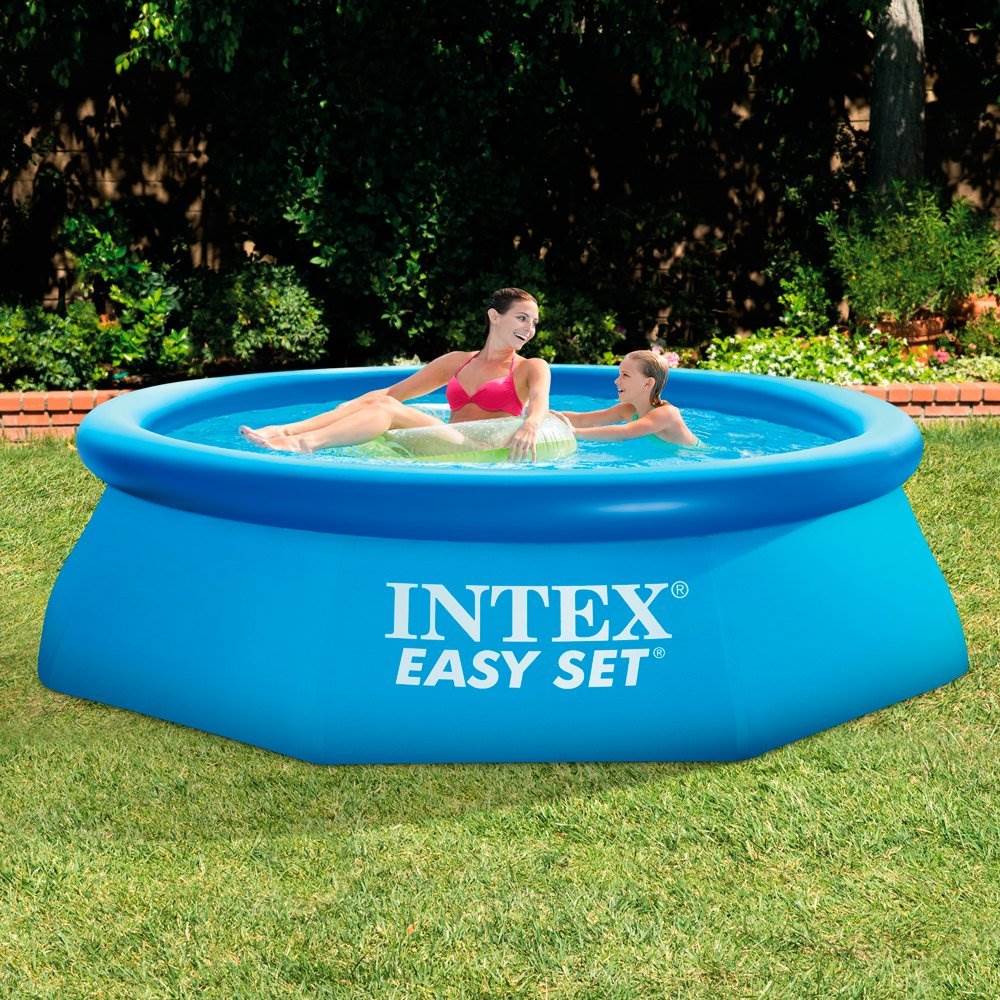
walmart.com
The best large DIY swimming pool
At 32 feet by 16 feet (and over 4 feet deep), this above-ground pool (Amazon.com, $2,599.99) offers plenty of space. Plus, the pieces snap together without tools. Add the liner and filter, and it should be ready for some Marco Polo in 90 minutes. That’s impressive as far at DIY pools go, plus it comes with a two-year warrantee.
amazon.com
Best swimming treadmill
Can’t imagine spending the summer without swimming laps? This lap swimming pool (Hammacher Schlemmer, $2,000) is so compact, it takes no more space than your average SUV. A harness system wraps around your waist with a flexible tether that suspends you above the water, so you can practice your strokes while staying in one place. The pool comes with a filter, works with chlorine or saltwater, and requires no tools or plumbing supplies to set up.
hammacherschlemmer.com
Best inflatable hot tub
Not ready to take the plunge and purchase a large pool? You can still relax and enjoy a low-level commitment with an inflatable hot tub (Lowes.com, $575.81). With seating for up to four and 140(!) bubble jets, this hot tub can be ready with just 25 minutes of setup. And this DIY spa doesn’t require much maintenance, as it comes with two easy-to-replace filter cartridges, which keep your water clean while the built-in, hard-water treatment system ensures it’s gentle on your skin.
lowes.com
A wading pool for your pup
Don’t leave Fido out of the fun! This portable pool for your pooch (Chewy.com, $59.95) is perfect for letting Rover take a relaxing dip or giving him a bath. This canine cooling center is made of high-grade, industrial-strength PVC material so it can withstand any pup’s most vigorous doggy paddles. No inflating is require—just fill with water, then remove the twist-off cap once done to drain.
chewy.com
The post Should I Get a Swimming Pool To Survive Quarantine This Summer? appeared first on Real Estate News & Insights | realtor.com®.
Sunday, May 24, 2020
Friday, May 22, 2020
Replace Your Quarantine Clutter With These 5 Dreamy Decor Ideas We Found on Instagram
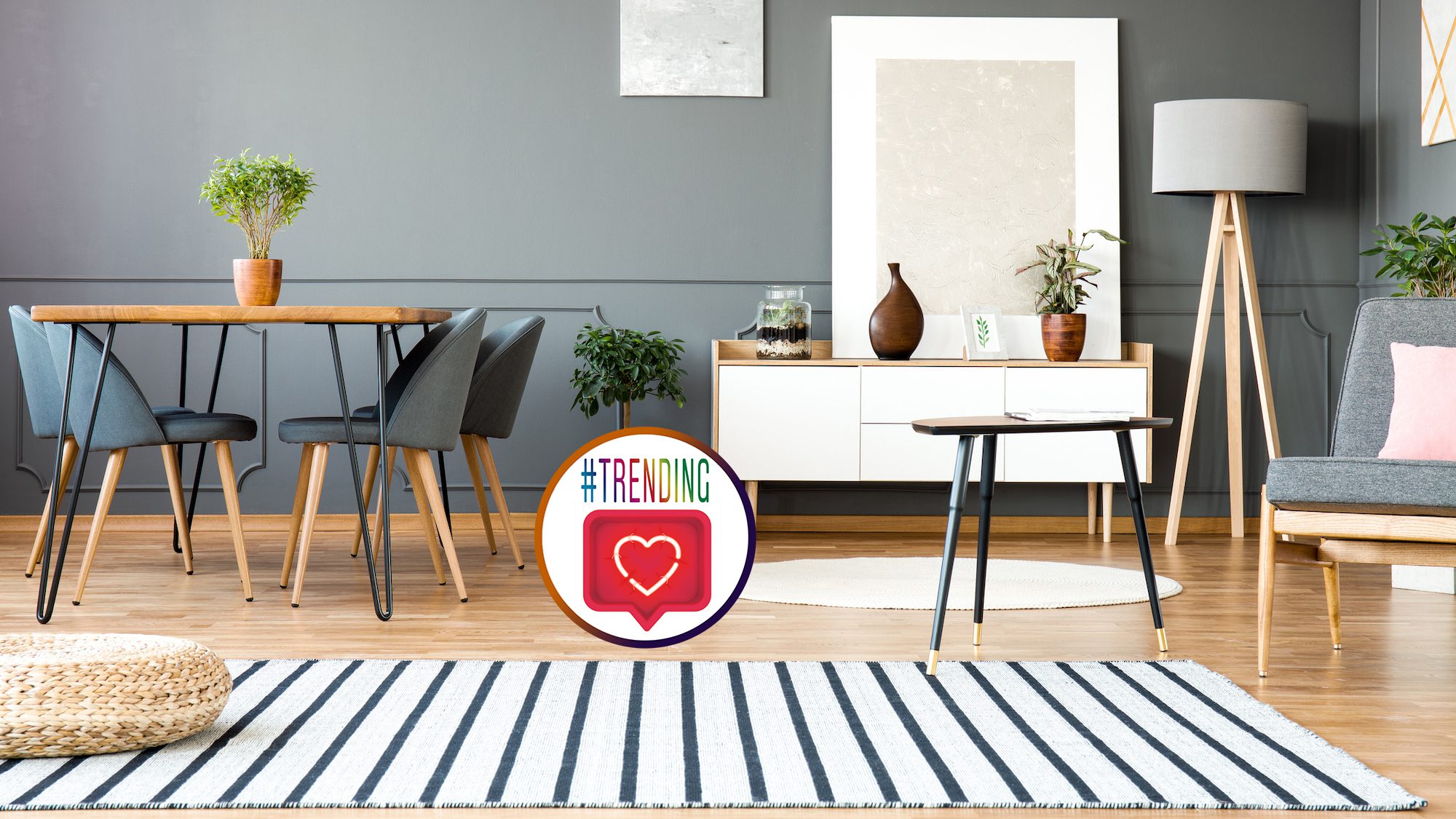
With the country starting to reopen, it might finally be time to stop hoarding toilet paper. Which means it might also be time to kick all that extra stuff out of your living room—like the surplus of cleaning supplies, kitchen-overflow of canned soup, and the many, many bottles of water.
Call us crazy, but we also think it’s the perfect time to give your space a face-lift. After months of quarantine, we’re all about ready for a makeover (or, at the very least, a haircut). While we can’t redesign your wardrobe or tame your hair, we can at least lend a hand when it comes to giving your living room a fresh, new look.
Like we do every week, we’re back with five of the best trends on Instagram, this time focused on taking your living room out of quarantine and into the summer.
1. Globe mirror
View this post on InstagramA post shared by @iconjane ‘s home (@iconjanehome) on
You’ve probably noticed giant floor mirrors before, but rarely have we seen one quite this massive—and round. Fortunately, @iconjanehome is on it.
“We are so used to the obligatory vertical floor mirror with sharp angular edges that this large, round mirror is a perfect change,” says Michelle Harrison-McAllister of Michelle Harrison Design. “A large, round mirror bounces light all around your room, creating a welcoming vibe.”
Get the look: Make your living room feel even brighter with this Elin accent mirror from Wayfair.
2. Natural chandelier
View this post on InstagramA post shared by Modern Farmhouse Decor (@casagrella) on
The year’s decor trends are big on bringing us back to nature, which is just one of the reasons we love this textured chandelier featured by @casagrella.
“Adding a natural material chandelier in any room of your home offers an organic and modern update,” says Harrison-McAllister. “People love this trend because of the familiar material that’s presented in an unusual way—making for a bold statement in any home.”
Get the look: To re-create this bold statement in your living room, check out the Hodgdon single-globe pendant from Wayfair.
3. Cabana stripes
View this post on InstagramA post shared by Modern Bohemian (@boho.helene) on
Black and white stripes are making a big comeback this summer, as evidenced by this trending post from the living room of @boho.helene.
“These stripes are a sophisticated way to add some character and pattern to the space without creating extra noise,” says interior decorator Shelby Greene. “Black and white stripes are a neutral colorblock that creates interest, yet they’re easy on the eye and don’t distract or take away from the overall design.”
Get the look: Snag some striped glamour for your digs with this black and white cabana rug from Living Spaces.
4. Royal palm lighting
View this post on InstagramA post shared by S E A T R I B E ™️ 🌴 (@sea_tribe) on
You’re probably not feeling like royalty these days, but this gorgeous lamp featured by @sea_tribe might change your mind.
“This brass palm tree floor lamp is an art piece and lighting all in one,” says Harrison-McAllister. “Bringing the organic shape of the palm tree offers your room a hint of the outdoors, whether you live in Kansas, Miami, or Connecticut. This style also brings personality to a living room, and the brass finish adds some color and sophistication.”
Get the look: You can get your own royal palm lamp by shopping this Emily & Meritt palm floor lamp from Pottery Barn.
5. 3D accent wall
View this post on InstagramA post shared by Eclectic goods (@eclectic_goods) on
Who says you need a fresh coat of paint to make a wall pop? Not @eclectic_goods, which is positively rocking this 3D all-white accent wall in the living room.
“Adding depth is a timeless look for any room, and if you want an alternative to simply adding another piece of artwork, this is the solution for you,” says Harrison-McAllister. “This trend allows homeowners to personalize their walls without any construction—since an accent wall like this one can be done using peel-and-stick applications.”
Get the look: Add some depth to your room with this selection of peel-and-stick wall appliqués from AllModern.
The post Replace Your Quarantine Clutter With These 5 Dreamy Decor Ideas We Found on Instagram appeared first on Real Estate News & Insights | realtor.com®.




